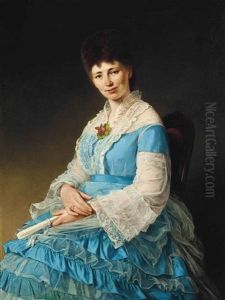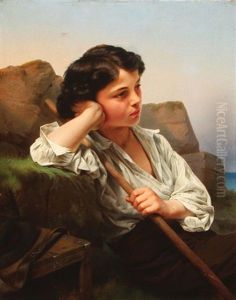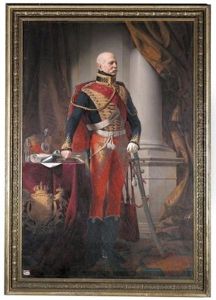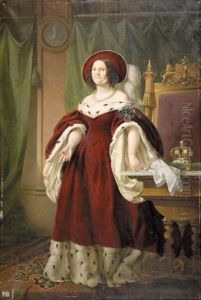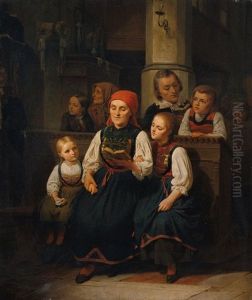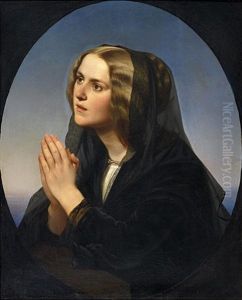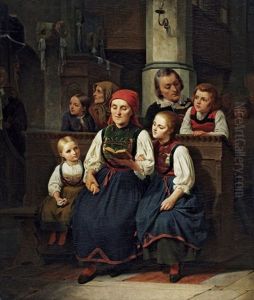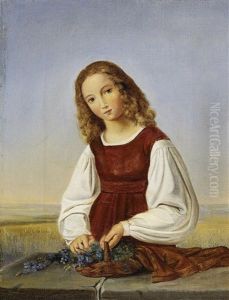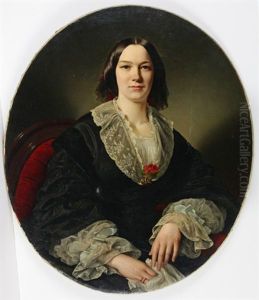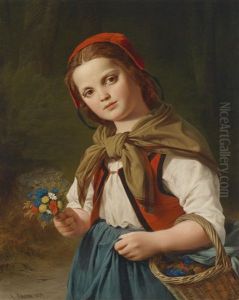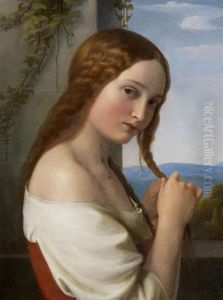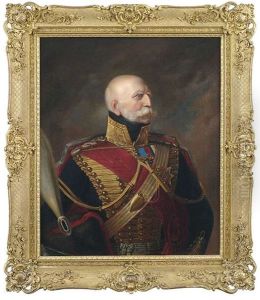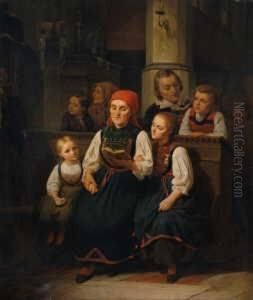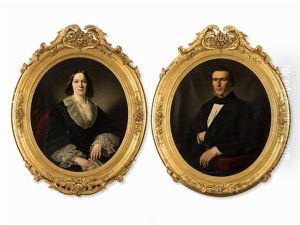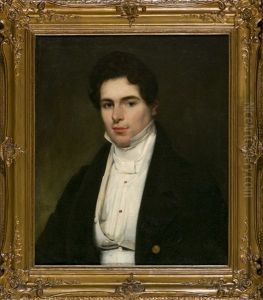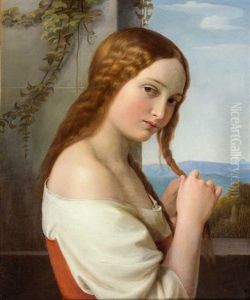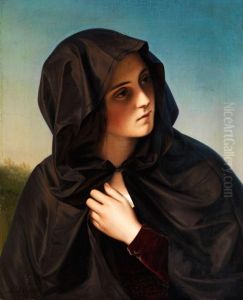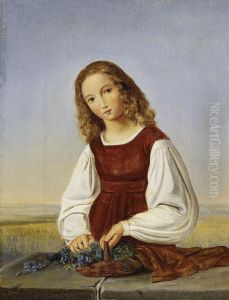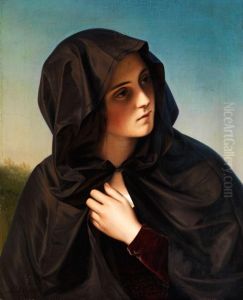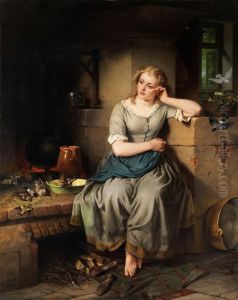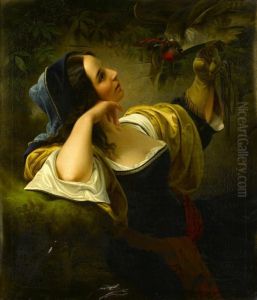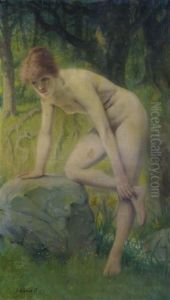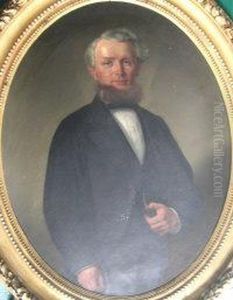Louis Ammy Blanc Paintings
Louis Ammy Blanc was a Swiss-French painter known for his historical and portrait paintings. Born on May 10, 1810, in Montpellier, France, Blanc showed an early interest in art and went on to study at the École des Beaux-Arts in Paris. He was a student of François-Édouard Picot, a well-established painter of his time. Blanc's education and talent paved the way for a career that would see him creating works that were both appreciated by critics and sought after by patrons.
In his early years, Blanc's paintings were primarily historical in nature, often depicting scenes from French and European history with a romantic and dramatic flair that was popular during the 19th century. He participated in the Paris Salon, an official art exhibition of the Académie des Beaux-Arts in Paris, where his works received favorable attention. His success at the Salon helped to establish his reputation as a skilled painter of historical scenes.
Throughout his career, Blanc also became known for his portrait work. He painted notable figures of his time, capturing the personalities and social standings of his subjects with a keen eye for detail and character. His portraits were not only commissions by wealthy patrons but also sometimes personal studies of people he found interesting.
Louis Ammy Blanc's work reflects the broader trends of French art in the 19th century, particularly the Romantic movement, which emphasized emotion and individualism. His paintings often had a narrative quality, telling stories through rich color and carefully composed scenes. Despite the prominence of Romanticism during his lifetime, Blanc's style also showed elements of Neoclassicism, particularly in his use of clear lines and structured compositions.
Blanc's contributions to the art world were recognized in his time, and his works continue to be studied by art historians for their representation of 19th-century aesthetics and techniques. He passed away on March 29, 1885, in Paris, leaving behind a body of work that contributes to the understanding of French art during a period marked by significant political, social, and cultural change.
